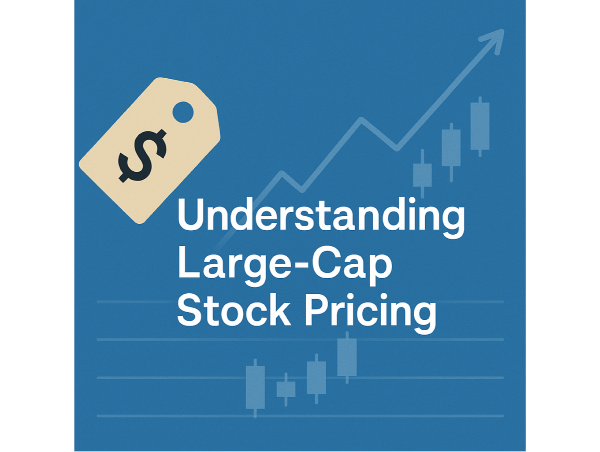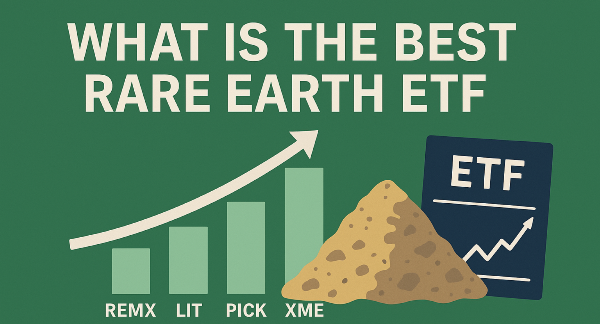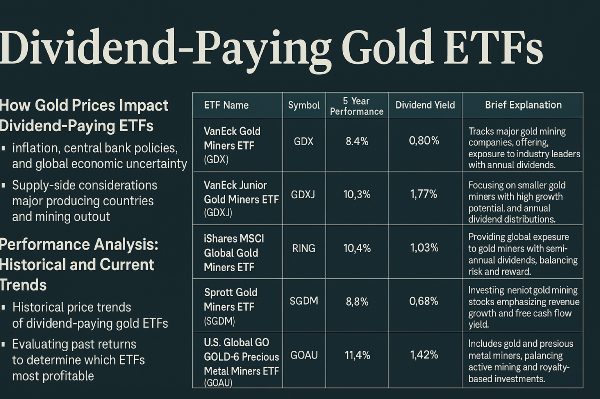Introduction
Large-cap stocks represent companies with substantial market capitalization, typically exceeding $10 billion, making them key players in financial markets. These firms often exhibit stability, strong financial performance, and industry leadership, attracting investors seeking reliable returns. Understanding price ranges within this category is essential for making informed investment decisions, as valuations fluctuate based on sector dynamics, economic trends, and company performance.
Understanding Large-Cap Stock Pricing
Large-cap stocks are categorized based on market capitalization, which refers to the total market value of a company's outstanding shares. These stocks are commonly found in major indices such as the S&P 500 and Dow Jones Industrial Average, serving as benchmarks for market performance. Strong financial performance, such as revenue growth and profitability, can drive stock prices higher, while negative earnings surprises may lead to declines. Broader economic conditions, such as interest rate changes and inflation, also impact large-cap valuations.
Additionally, investor demand and sector-specific developments play a role in determining price fluctuations. Large-cap stocks differ from mid-cap and small-cap stocks in terms of pricing and risk exposure. Large-cap stocks generally exhibit lower price volatility and stronger financial fundamentals, making them suitable for conservative investors.
Historical Trends in Large-Cap Stock Prices
Historical trends in large-cap stock prices reveal long-term patterns shaped by economic cycles, technological advancements, and market sentiment. Over the decades, major indices such as the S&P 500 and Nasdaq-100 have reflected shifts in sector dominance, with technology and healthcare gaining prominence while financials and energy have fluctuated. Large-cap stocks have historically provided stability. Economic cycles play a crucial role in large-cap stock valuations, affecting sector performance and investor sentiment. Interest rate changes and fiscal policies further impact stock prices, influencing capital allocation strategies across different sectors. Case studies of notable large-cap stock price shifts highlight key moments in market history.
Key Factors Affecting Large-Cap Stock Prices
Financial metrics such as price-to-earnings ratios, debt levels, and cash flow stability influence valuations, guiding investment decisions. Market sentiment, investor demand, and macroeconomic trends significantly impact large-cap stock valuations. External factors such as geopolitical events and interest rates further affect large-cap stock prices. Political instability, trade policies, and global conflicts can create market volatility, leading to fluctuations in stock valuations.
Sector-Based Price Ranges in Large-Cap Stocks
The price range of large-cap stocks varies across sectors, reflecting differences in growth potential, stability, and market demand. Technology stocks often command higher valuations due to their rapid innovation and scalability. Financial sector stocks generally exhibit more stable pricing trends, influenced by interest rates, economic cycles, and regulatory policies. Consumer goods and services stocks display a mix of stability and cyclical price movements. Investors analyzing sector-based price ranges can optimize portfolio allocations based on risk tolerance and market conditions.
Market Valuation and Price Multiples in Large-Cap Stocks
Market valuation and price multiples are essential tools for assessing large-cap stock prices. The price-to-earnings (P/E) ratio is one of the most widely used valuation metrics, comparing a company's stock price to its earnings per share. Other valuation multiples, such as price-to-book (P/B) and price-to-sales (P/S), provide additional insights into a company's financial health and market position. Market valuation plays a crucial role in defining the price range of large-cap stocks. Companies with strong earnings growth, stable cash flows, and competitive advantages often command higher valuations.
Enterprise value multiples, such as EV/EBITDA, assess a company's total market value relative to its earnings before interest, taxes, depreciation, and amortization. Analysts examine financial statements, revenue trends, and profitability metrics to assess a company's intrinsic value. Factors such as return on equity (ROE), debt levels, and free cash flow influence stock valuations and price movements.
Investment Strategies Based on Large-Cap Stock Pricing
Growth investing and value investing are two primary strategies for large-cap stock selection. Growth investors focus on companies with strong revenue expansion, innovative products, and high earnings potential. Value investors, on the other hand, seek undervalued large-cap stocks with solid fundamentals, stable cash flows, and lower valuation multiples. Sector-based allocation strategies help investors optimize price range exposure within large-cap portfolios.
Technology and healthcare sectors often feature high-growth stocks with premium valuations, while financials and consumer staples provide stability and consistent dividends. Diversifying across sectors ensures balanced risk management, reducing exposure to market fluctuations. Understanding sector-specific price trends allows investors to refine their portfolio strategies for optimal returns. Dollar-cost averaging, where investments are made at regular intervals, helps smooth out price fluctuations over time.
Future Trends in Large-Cap Stock Pricing
Future trends in large-cap stock pricing will be shaped by sector-specific movements, technological advancements, and economic policies. The technology sector is expected to maintain its leadership position, driven by artificial intelligence, cloud computing, and cybersecurity innovations. Healthcare stocks may see continued growth due to advancements in biotechnology and personalized medicine. Meanwhile, financial and energy sectors could experience shifts based on interest rate changes and sustainability initiatives.
Emerging market trends and technological advancements will play a crucial role in large-cap stock valuations. Economic policies will continue to affect large-cap stock pricing, particularly in response to inflation, interest rates and regulatory changes. Also, geopolitical tensions play a key role. Investors who stay informed about policy shifts can make strategic adjustments to optimize portfolio performance.
Conclusion
Understanding the price range of large-cap stocks requires analyzing sector trends, valuation metrics, and economic influences. Different sectors exhibit varying levels of stability and growth potential, impacting overall market dynamics. Investors who strategically allocate assets based on stock pricing, historical trends, and emerging market shifts can optimize portfolio performance while managing risk.
As economic conditions evolve, staying informed about sector-based pricing movements and valuation strategies will be crucial for long-term investment success. Large-cap stocks continue to provide diverse opportunities, balancing stability with growth across multiple industries.




























Introduction
Large-cap stocks represent companies with substantial market capitalization, typically exceeding $10 billion, making them key players in financial markets. These firms often exhibit stability, strong financial performance, and industry leadership, attracting investors seeking reliable returns. Understanding price ranges within this category is essential for making informed investment decisions, as valuations fluctuate based on sector dynamics, economic trends, and company performance.
Understanding Large-Cap Stock Pricing
Large-cap stocks are categorized based on market capitalization, which refers to the total market value of a company's outstanding shares. These stocks are commonly found in major indices such as the S&P 500 and Dow Jones Industrial Average, serving as benchmarks for market performance. Strong financial performance, such as revenue growth and profitability, can drive stock prices higher, while negative earnings surprises may lead to declines. Broader economic conditions, such as interest rate changes and inflation, also impact large-cap valuations.
Additionally, investor demand and sector-specific developments play a role in determining price fluctuations. Large-cap stocks differ from mid-cap and small-cap stocks in terms of pricing and risk exposure. Large-cap stocks generally exhibit lower price volatility and stronger financial fundamentals, making them suitable for conservative investors.
Historical Trends in Large-Cap Stock Prices
Historical trends in large-cap stock prices reveal long-term patterns shaped by economic cycles, technological advancements, and market sentiment. Over the decades, major indices such as the S&P 500 and Nasdaq-100 have reflected shifts in sector dominance, with technology and healthcare gaining prominence while financials and energy have fluctuated. Large-cap stocks have historically provided stability. Economic cycles play a crucial role in large-cap stock valuations, affecting sector performance and investor sentiment. Interest rate changes and fiscal policies further impact stock prices, influencing capital allocation strategies across different sectors. Case studies of notable large-cap stock price shifts highlight key moments in market history.
Key Factors Affecting Large-Cap Stock Prices
Financial metrics such as price-to-earnings ratios, debt levels, and cash flow stability influence valuations, guiding investment decisions. Market sentiment, investor demand, and macroeconomic trends significantly impact large-cap stock valuations. External factors such as geopolitical events and interest rates further affect large-cap stock prices. Political instability, trade policies, and global conflicts can create market volatility, leading to fluctuations in stock valuations.
Sector-Based Price Ranges in Large-Cap Stocks
The price range of large-cap stocks varies across sectors, reflecting differences in growth potential, stability, and market demand. Technology stocks often command higher valuations due to their rapid innovation and scalability. Financial sector stocks generally exhibit more stable pricing trends, influenced by interest rates, economic cycles, and regulatory policies. Consumer goods and services stocks display a mix of stability and cyclical price movements. Investors analyzing sector-based price ranges can optimize portfolio allocations based on risk tolerance and market conditions.
Market Valuation and Price Multiples in Large-Cap Stocks
Market valuation and price multiples are essential tools for assessing large-cap stock prices. The price-to-earnings (P/E) ratio is one of the most widely used valuation metrics, comparing a company's stock price to its earnings per share. Other valuation multiples, such as price-to-book (P/B) and price-to-sales (P/S), provide additional insights into a company's financial health and market position. Market valuation plays a crucial role in defining the price range of large-cap stocks. Companies with strong earnings growth, stable cash flows, and competitive advantages often command higher valuations.
Enterprise value multiples, such as EV/EBITDA, assess a company's total market value relative to its earnings before interest, taxes, depreciation, and amortization. Analysts examine financial statements, revenue trends, and profitability metrics to assess a company's intrinsic value. Factors such as return on equity (ROE), debt levels, and free cash flow influence stock valuations and price movements.
Investment Strategies Based on Large-Cap Stock Pricing
Growth investing and value investing are two primary strategies for large-cap stock selection. Growth investors focus on companies with strong revenue expansion, innovative products, and high earnings potential. Value investors, on the other hand, seek undervalued large-cap stocks with solid fundamentals, stable cash flows, and lower valuation multiples. Sector-based allocation strategies help investors optimize price range exposure within large-cap portfolios.
Technology and healthcare sectors often feature high-growth stocks with premium valuations, while financials and consumer staples provide stability and consistent dividends. Diversifying across sectors ensures balanced risk management, reducing exposure to market fluctuations. Understanding sector-specific price trends allows investors to refine their portfolio strategies for optimal returns. Dollar-cost averaging, where investments are made at regular intervals, helps smooth out price fluctuations over time.
Future Trends in Large-Cap Stock Pricing
Future trends in large-cap stock pricing will be shaped by sector-specific movements, technological advancements, and economic policies. The technology sector is expected to maintain its leadership position, driven by artificial intelligence, cloud computing, and cybersecurity innovations. Healthcare stocks may see continued growth due to advancements in biotechnology and personalized medicine. Meanwhile, financial and energy sectors could experience shifts based on interest rate changes and sustainability initiatives.
Emerging market trends and technological advancements will play a crucial role in large-cap stock valuations. Economic policies will continue to affect large-cap stock pricing, particularly in response to inflation, interest rates and regulatory changes. Also, geopolitical tensions play a key role. Investors who stay informed about policy shifts can make strategic adjustments to optimize portfolio performance.
Conclusion
Understanding the price range of large-cap stocks requires analyzing sector trends, valuation metrics, and economic influences. Different sectors exhibit varying levels of stability and growth potential, impacting overall market dynamics. Investors who strategically allocate assets based on stock pricing, historical trends, and emerging market shifts can optimize portfolio performance while managing risk.
As economic conditions evolve, staying informed about sector-based pricing movements and valuation strategies will be crucial for long-term investment success. Large-cap stocks continue to provide diverse opportunities, balancing stability with growth across multiple industries.